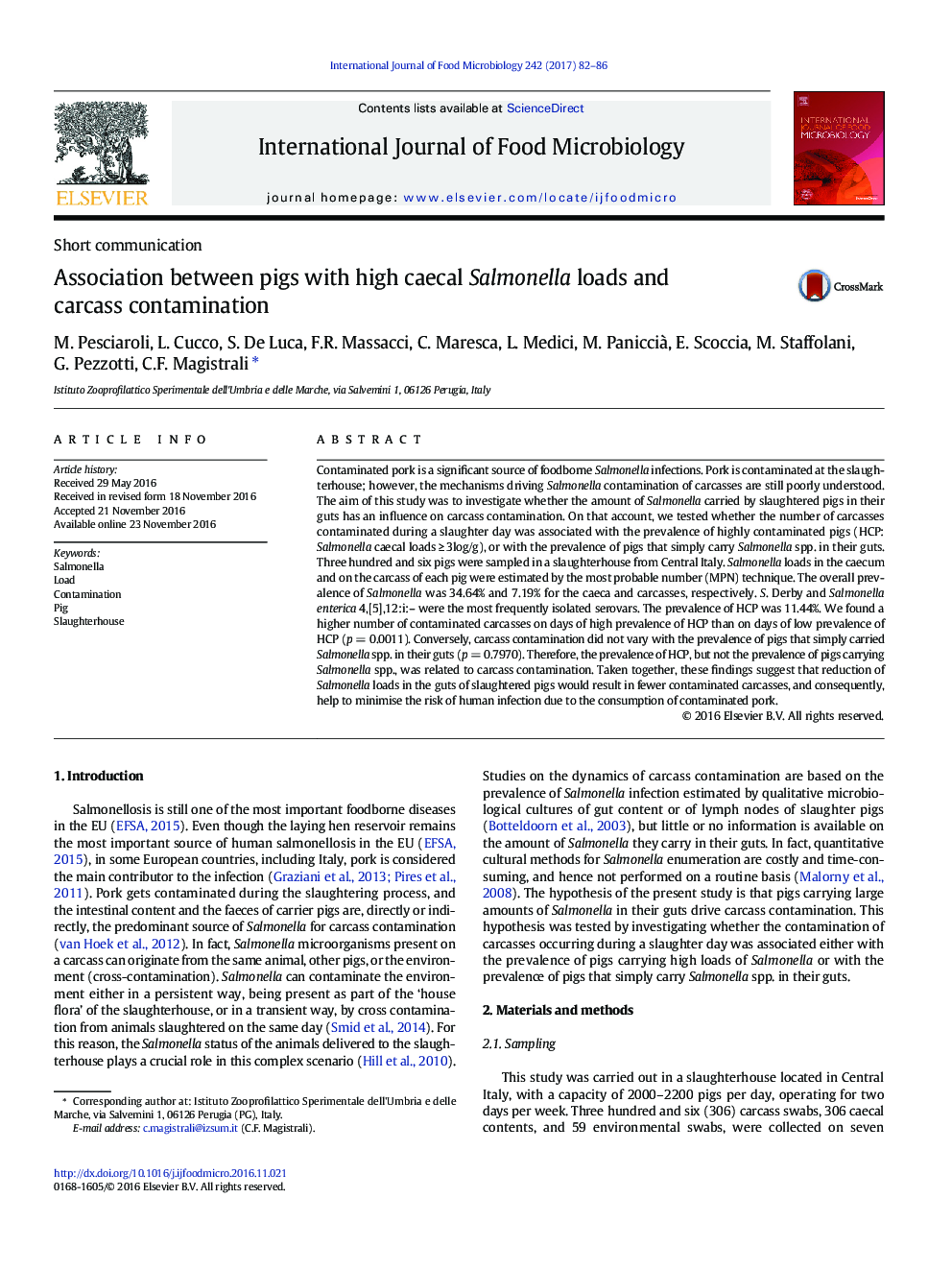| کد مقاله | کد نشریه | سال انتشار | مقاله انگلیسی | نسخه تمام متن |
|---|---|---|---|---|
| 5740947 | 1616541 | 2017 | 5 صفحه PDF | دانلود رایگان |
- Salmonella cecal loads of slaughter pigs were estimated.
- Salmonella prevalence was not associated with carcass contamination.
- Carcass contamination was associated with high cecal loads.
Contaminated pork is a significant source of foodborne Salmonella infections. Pork is contaminated at the slaughterhouse; however, the mechanisms driving Salmonella contamination of carcasses are still poorly understood. The aim of this study was to investigate whether the amount of Salmonella carried by slaughtered pigs in their guts has an influence on carcass contamination. On that account, we tested whether the number of carcasses contaminated during a slaughter day was associated with the prevalence of highly contaminated pigs (HCP: Salmonella caecal loads â¥Â 3log/g), or with the prevalence of pigs that simply carry Salmonella spp. in their guts. Three hundred and six pigs were sampled in a slaughterhouse from Central Italy. Salmonella loads in the caecum and on the carcass of each pig were estimated by the most probable number (MPN) technique. The overall prevalence of Salmonella was 34.64% and 7.19% for the caeca and carcasses, respectively. S. Derby and Salmonella enterica 4,[5],12:i:- were the most frequently isolated serovars. The prevalence of HCP was 11.44%. We found a higher number of contaminated carcasses on days of high prevalence of HCP than on days of low prevalence of HCP (p = 0.0011). Conversely, carcass contamination did not vary with the prevalence of pigs that simply carried Salmonella spp. in their guts (p = 0.7970). Therefore, the prevalence of HCP, but not the prevalence of pigs carrying Salmonella spp., was related to carcass contamination. Taken together, these findings suggest that reduction of Salmonella loads in the guts of slaughtered pigs would result in fewer contaminated carcasses, and consequently, help to minimise the risk of human infection due to the consumption of contaminated pork.
Journal: International Journal of Food Microbiology - Volume 242, 2 February 2017, Pages 82-86
